If You See These 12 Things on Your Body, Call Your Doctor
It’s better to be safe than sorry.
It’s never a bad idea to check in with your doctor
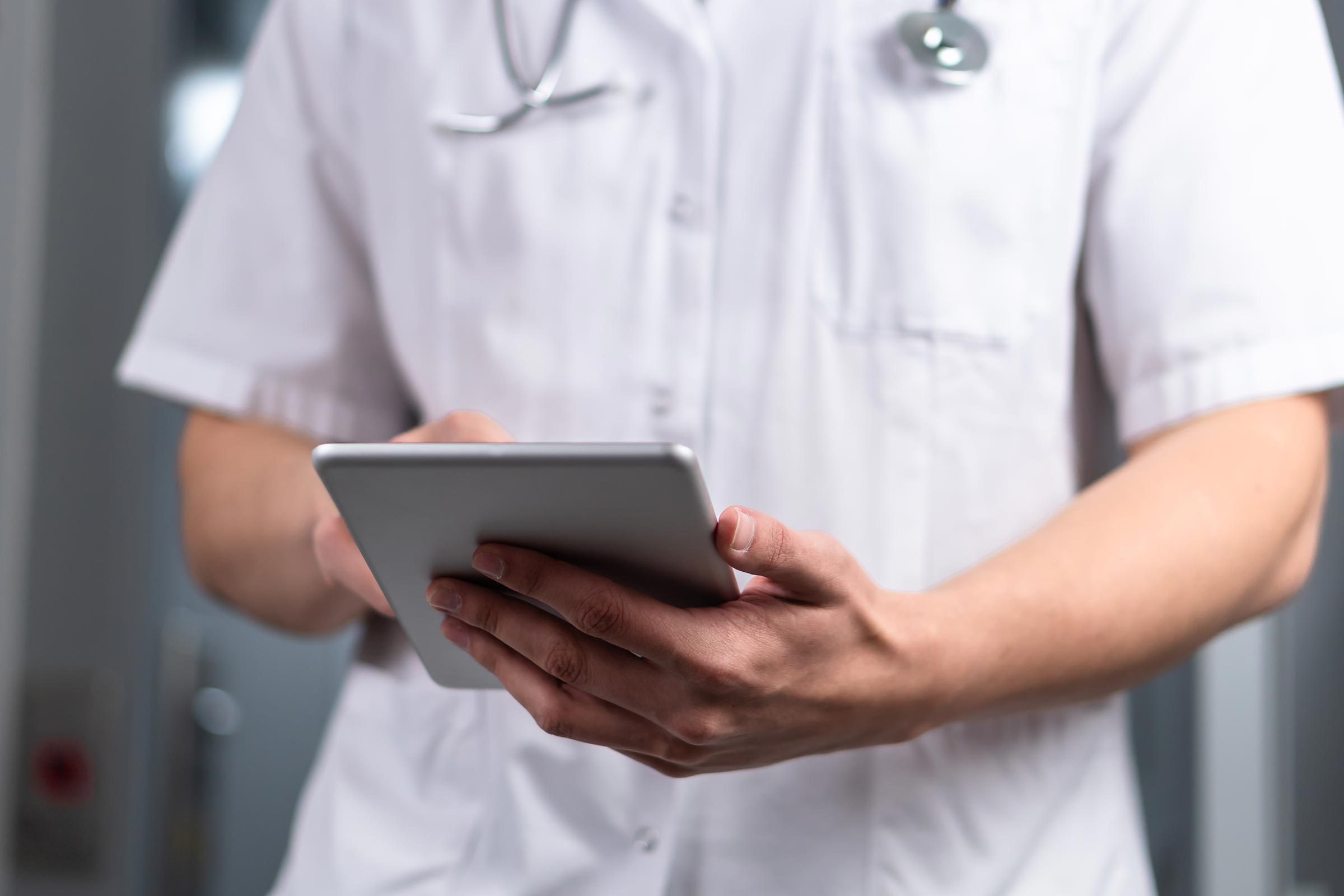
Your skin can say a lot about your health. Changes, from new growths to discolorations, can often be a signal of an underlying health condition. It may be as simple as a nutrition deficiency or, in some cases, something more serious—including diabetes, heart disease, arthritis, autoimmune disease, or even cancer. So it’s important to keep an eye on any new changes in or on your body. Your doctor can help rule out other conditions or health issues. If you see any of the following, it’s time to schedule an appointment.
New or changing moles or lesions
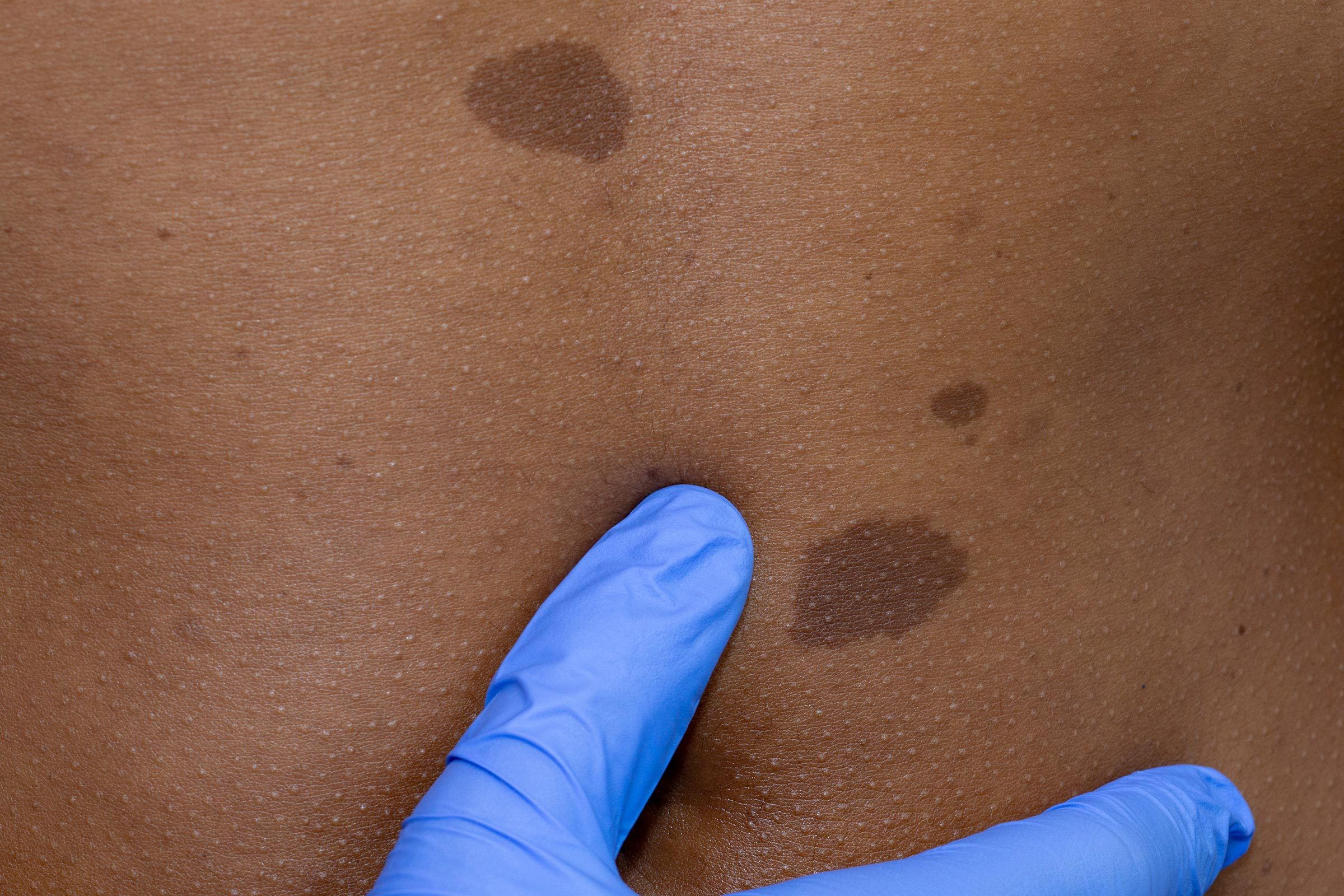
When it comes to new or changing moles or other body marks, look for the ABCDEs of melanoma, according to Natalie Yin, MD, assistant professor of dermatology at Columbia University Medical Center. A stands for asymmetry; B for borders (irregular or ill-defined ones); C for color (more than one color is concerning); D for diameter (larger lesions need checking); and E for evolution (lesions changing over time), says Dr. Yin. Other concerning body marks that may be signs of skin cancer include non-healing sores and new moles appearing later in life. “Patients should have a low threshold for seeing their board-certified dermatologist if they notice any concerning spots on their bodies for prompt evaluation,” Dr. Yin says.
Lumps of any kind
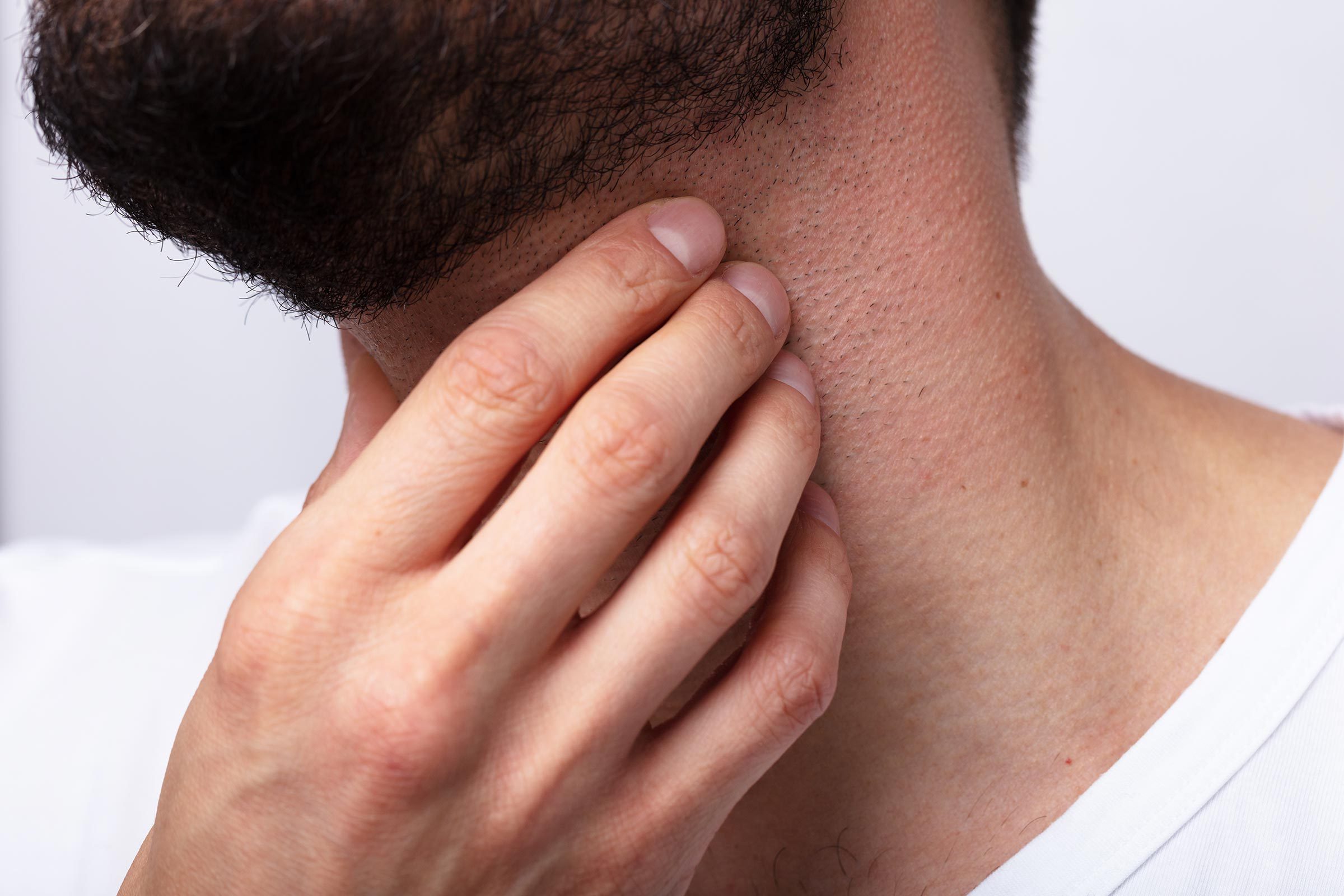
The bottom line is that you shouldn’t ignore any new or suspicious changes you can see on your body, especially lumps, according to Nesochi Okeke-Igbokwe, MD, a physician, and health expert. “Any new or changing lumps, moles, or lesions that you find on the body should be brought to the immediate attention of a doctor,” she says. It’s important to check these things because if it happens to be a cancerous change, then earlier detection and treatment are key for a better outcome, says Dr. Okeke-Igobkwe.
A dark line on your nails
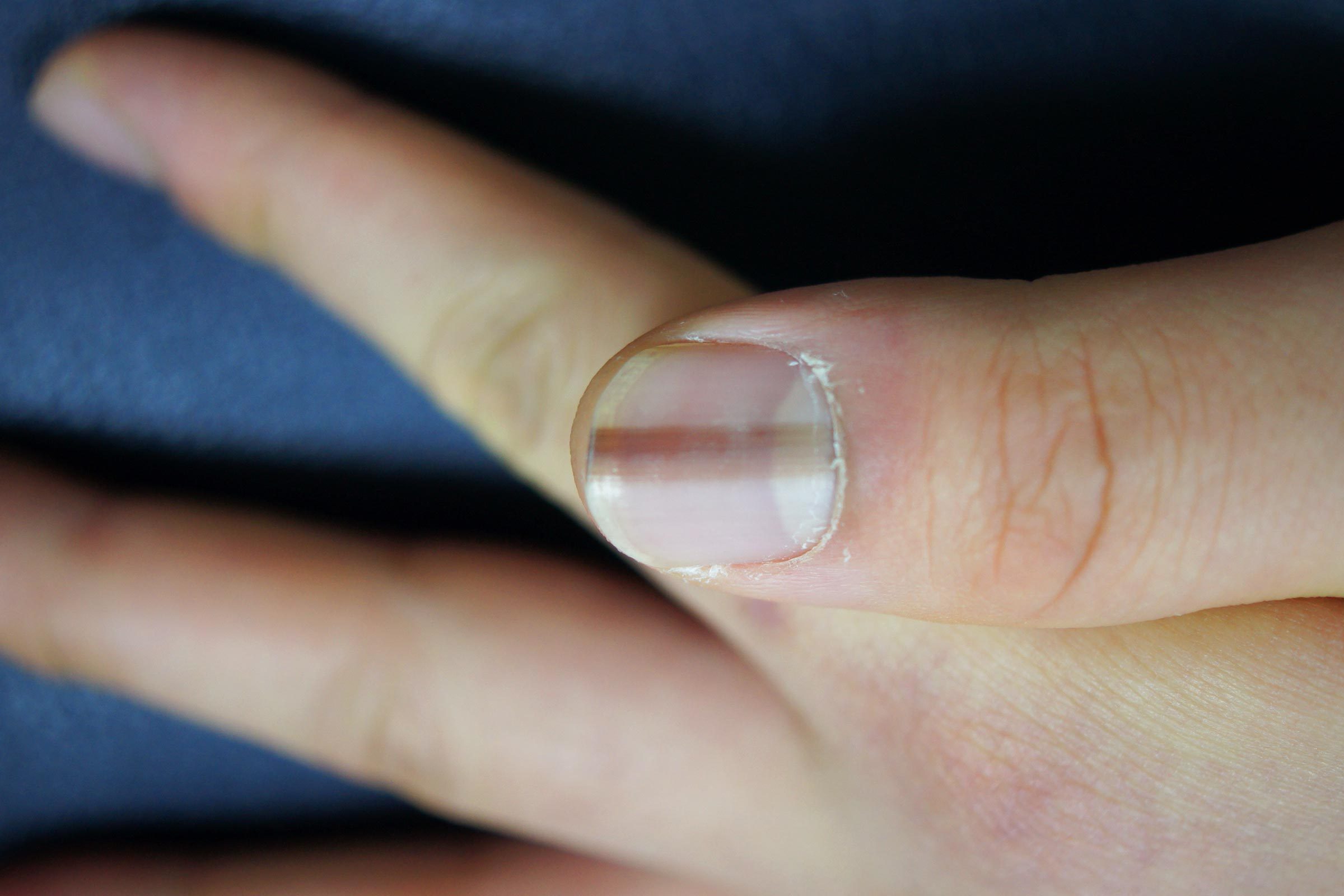
Fingernails can reveal just as much about your health as your skin. And although some marks could be due to something like a nutrient deficiency or even something hereditary, a more serious one you should look out for are dark brown or black lines across the nail. This specific mark may be a sign of nail or subungual melanoma which occurs under the nail and affects only 0.7 to 3.5 percent of people with melanoma. Other dots on your nail could be more signs of melanoma, too, including darkened skin around the nail, blood, and splits in the nail, per the American Academy of Dermatology.
White spots on your nails
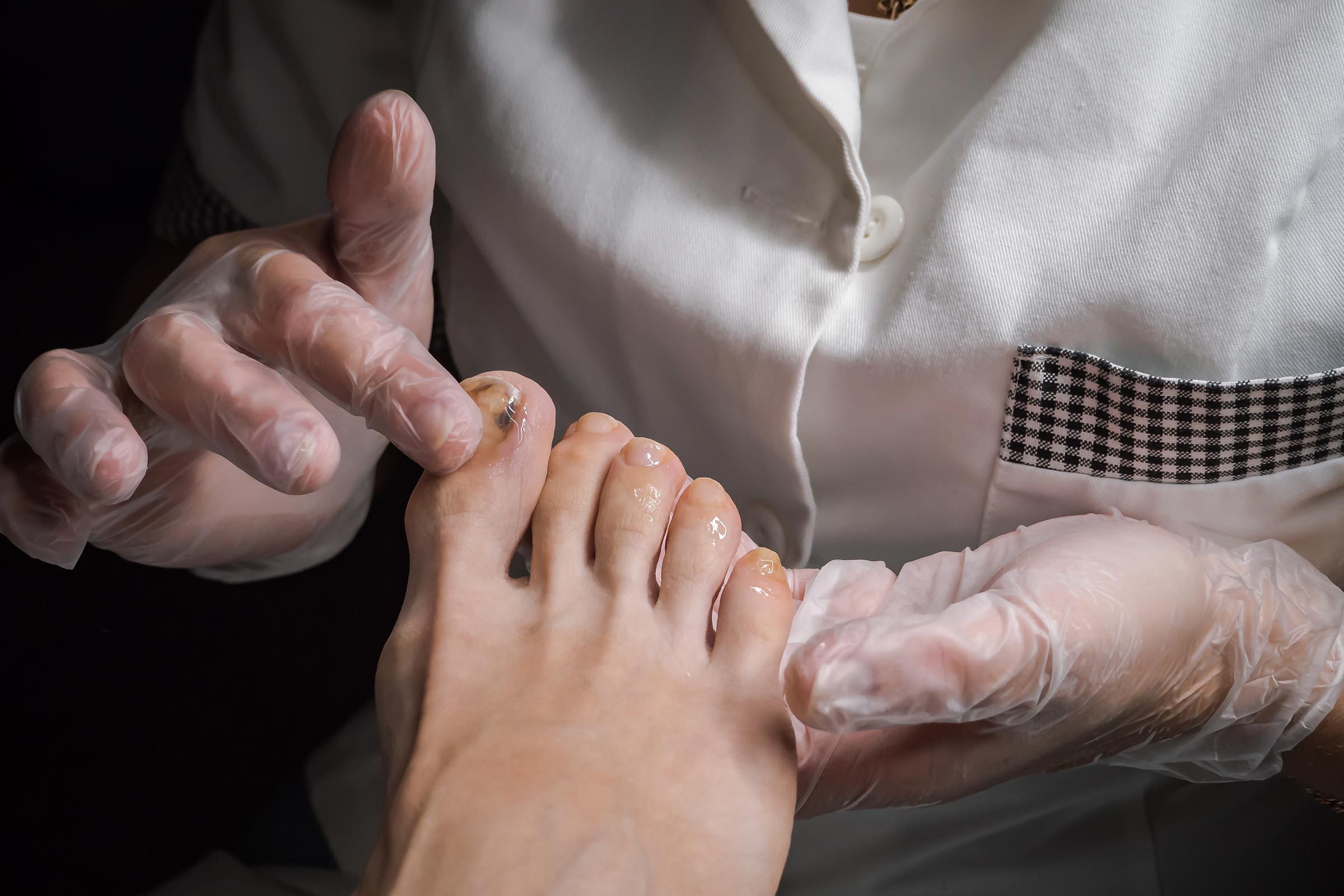
There are two types of white spots: “true leukonychia” (spots on the nail plate itself) and “apparent leukonychia” (spots that look like they’re on the nail, but they’re actually on the nail bed skin underneath). True leukonychia could be a sign of poisoning from arsenic or heavy metal, although it’s rather rare. Apparent leukonychia, however, may be thanks to health problems in the kidney, liver, or heart. Press on the nail to tell the difference; if the white spot stays there, it’s on the nail itself and is generally no cause for concern. Sometimes this happens because of trauma to the nail, like hitting it against a door. If the whiteness disappears or changes color, it’s coming from the nail bed skin, and it could indicate a more serious health concern, according to Ivy Lee, MD, a dermatologist in Pasadena, California and assistant clinical professor of dermatology at UCLA.
Pits in your nails
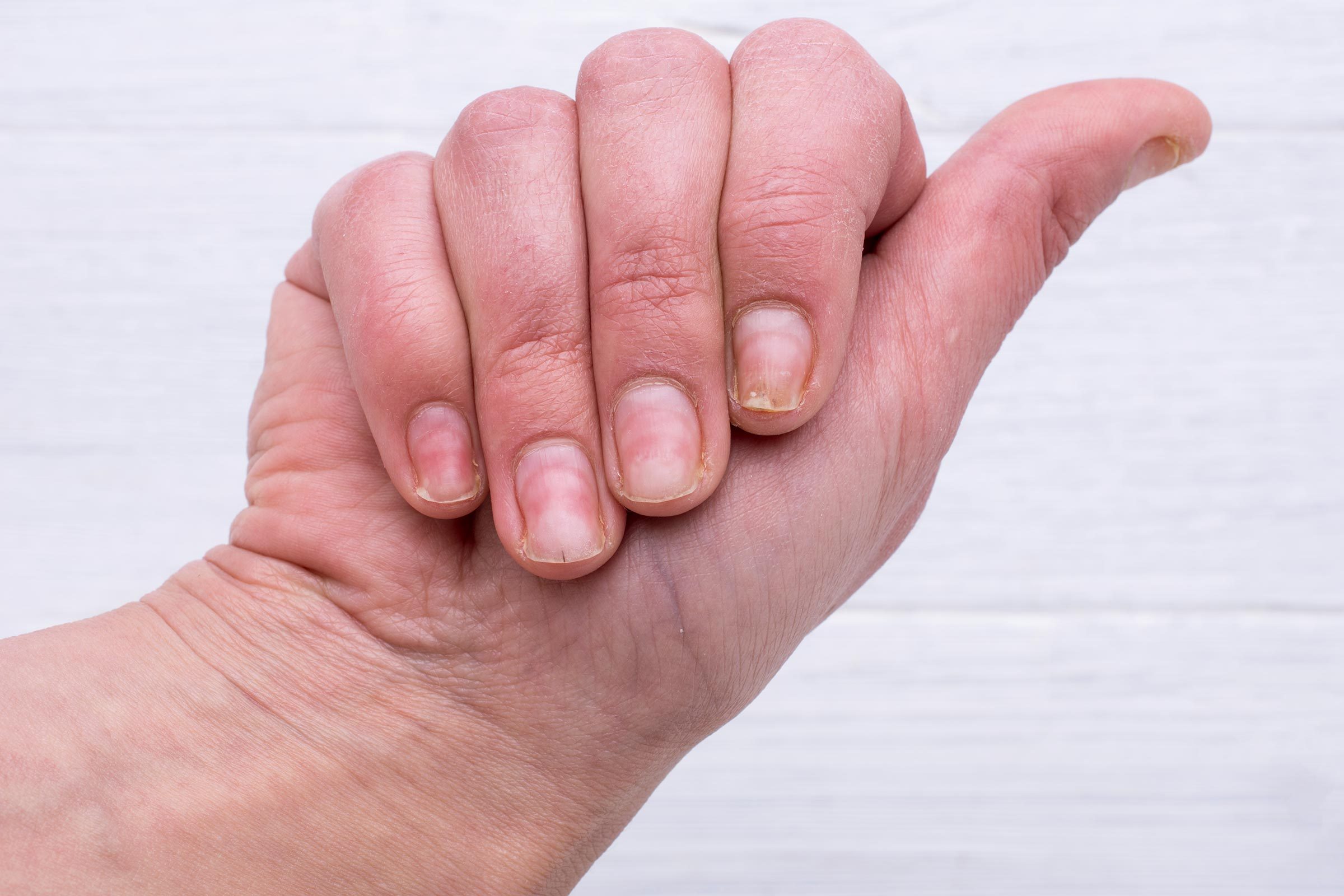
Sergey Privalov/Shutterstock
Indentations, or pits in the nails, are usually on fingernails instead of toenails. Trauma, hair loss, or nail psoriasis might cause these indentations, says Shari Lipner, MD, a dermatologist at NewYork-Presbyterian and Weill Cornell Medicine. Patients with nail psoriasis can also have underlying arthritis or inflammation, too, Medical News Today reports. Your nails can also reveal these 7 other things about your health.
Spots on your teeth
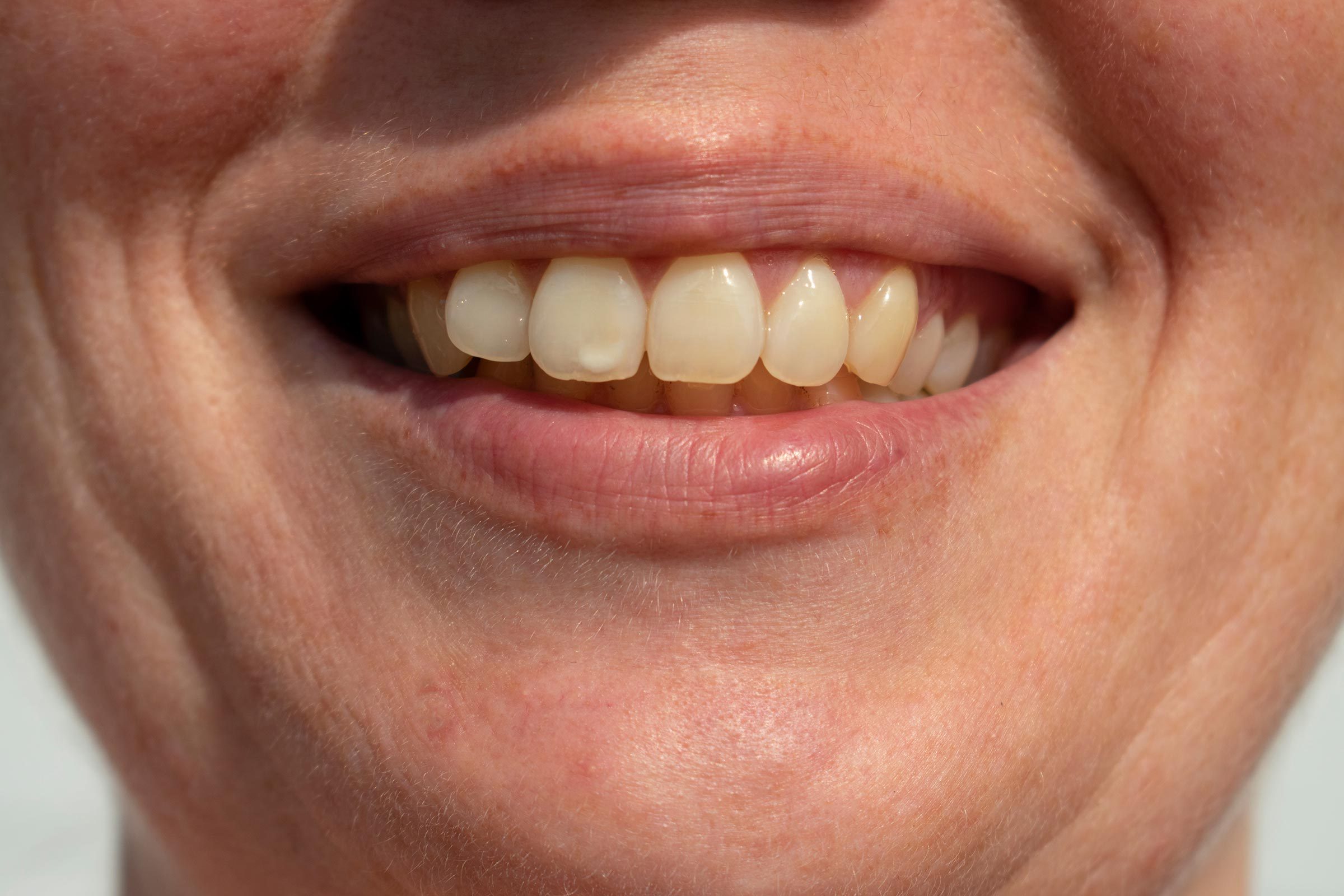
Darac/Shutterstock
If you notice white, yellow, or brown spots on your teeth that you can’t attribute to coffee, tea, or smoking, they could be a sign of celiac disease. The autoimmune disorder is a reaction to eating gluten—a protein found in wheat, rye, and barley—leading to stomach damage and trouble absorbing nutrients. One of these nutrients is calcium, which plays a big role in healthy teeth. “It can be seen in as many as 40 to 50 percent of new pediatric celiac patients, compared to 6 percent of the healthy population,” says Hilary Jericho, MD, a specialist in pediatric gastroenterology at the University of Chicago. Your doctor should check any spots that are symmetrical and scattered across most of your teeth.
Dirt-like spots on your neck
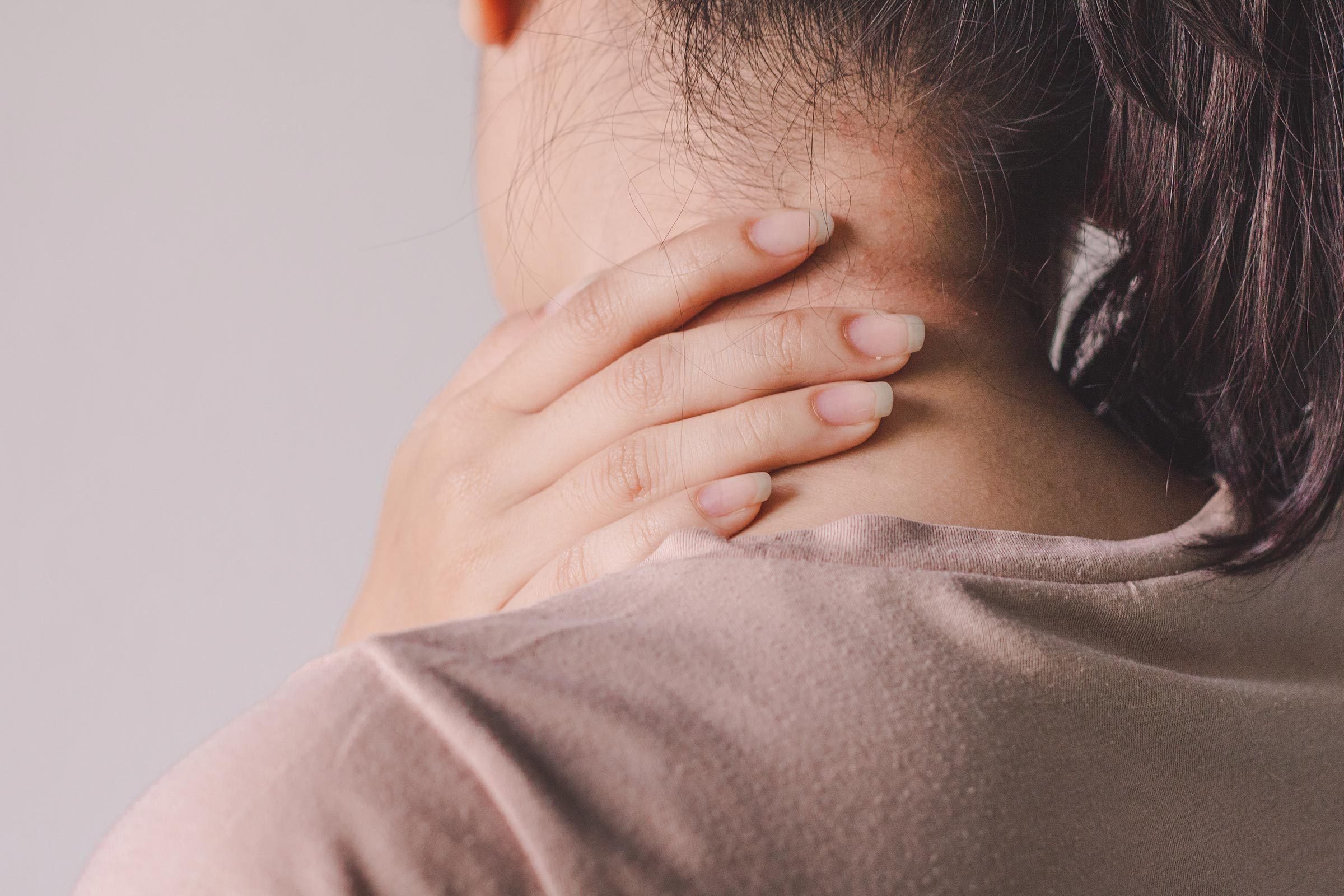
jajam_e/Shutterstock
A neck rash resembling dirt could be acanthosis nigricans rash. It may be a sign that a patient has diabetes or insulin resistance, according to Dr. Lipner. This rash might be thanks to an underlying endocrine problem such as thyroid disease, polycystic ovarian syndrome, or an adrenal problem, Dr. Lipner adds. Plus, in rare cases, it could be a presenting sign of underlying cancer in the stomach, colon, or liver. “It is also more common in obese people and may run in families,” Dr. Lipner says. “It is important to see a board certified dermatologist who can make the diagnosis and work up the patient for underlying disorders.” Still, this rash might be because of medications like birth control or niacin, but it’s still a good idea to check with your doctor.
Skin that looks like an orange peel
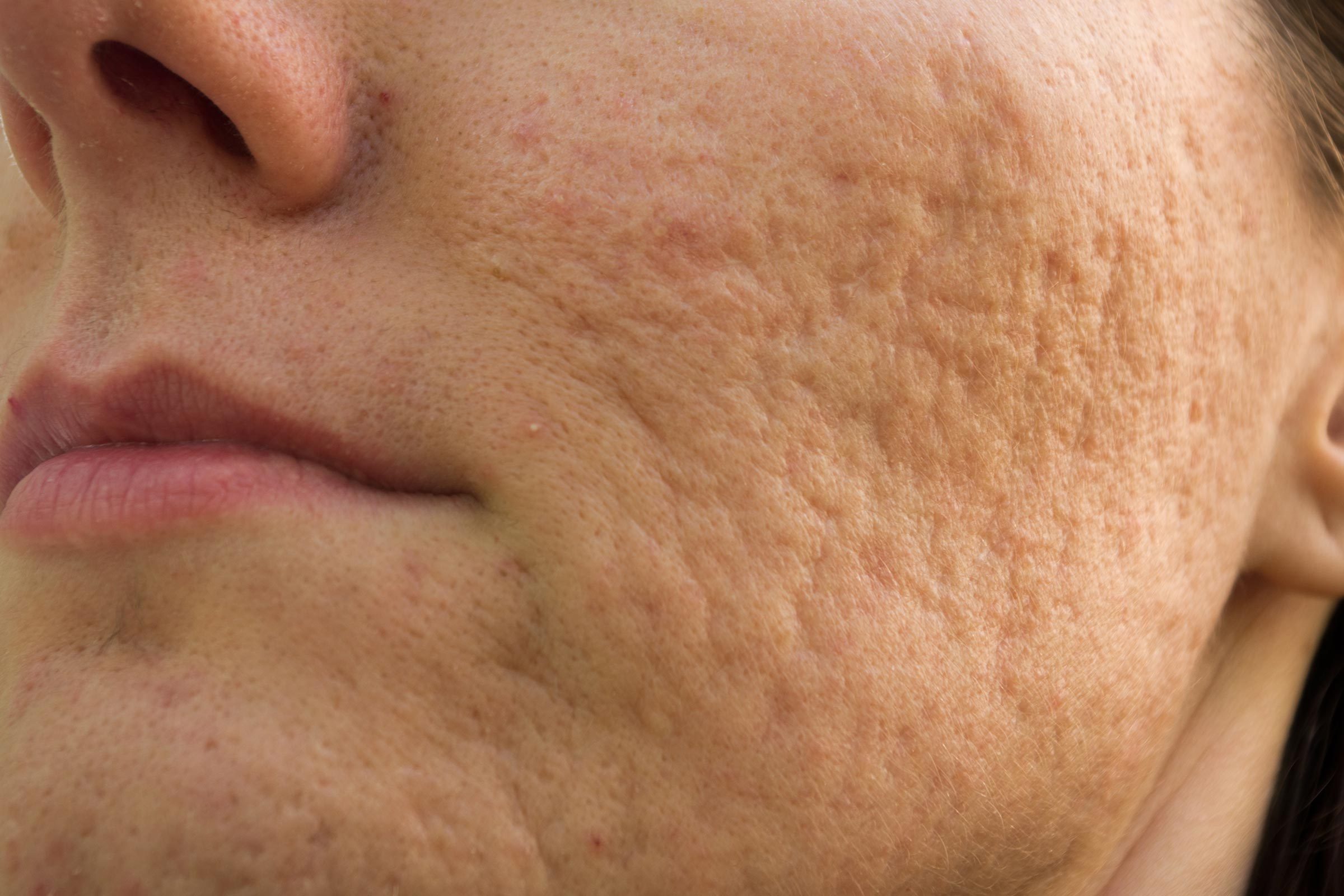
Dimples in the skin resembling orange peel might be thanks to different health issues. One is inflammatory breast cancer, which causes redness and swelling with dimples, according to Dr. Lipner. The same skin reaction is typical on the arms and legs of people with uncontrolled diabetes, she adds. Of course, your doctor will be able to examine you and make a proper diagnosis. Some things are easier to tell than others though, like these 11 things your doctor knows just by looking at you.
Excessive, unexplainable bruises
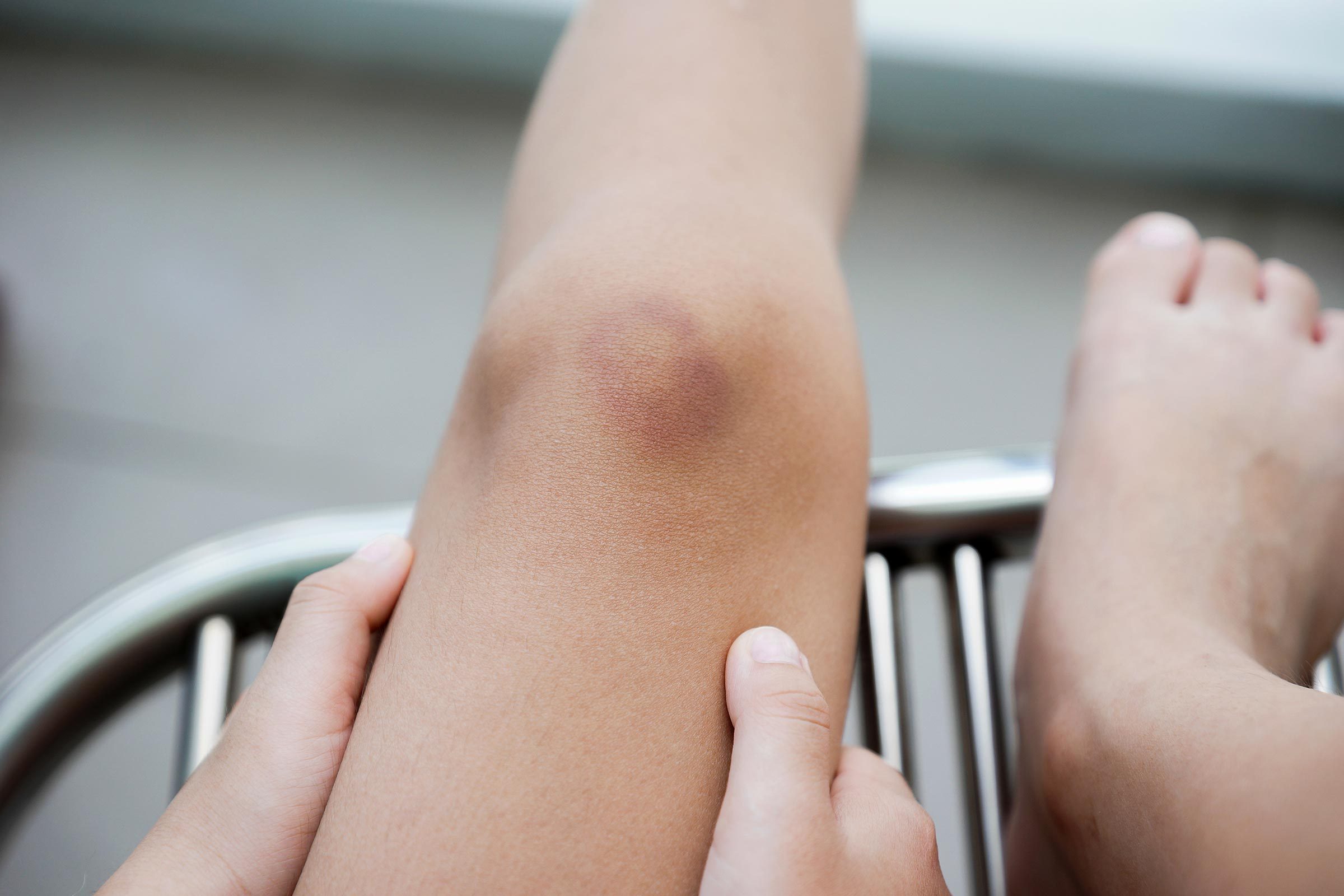
Tharnapoom Voranavin/Shutterstock
Although bruising may occur thanks to natural fat loss, medications, or even topical steroids, other reasons for excessive bruising are more concerning. Unexplainable bruising could be an early sign of leukemia, according to the Cancer Treatment Centers of America. Over time, leukemia impairs the blood’s ability to carry oxygen and clot, and this can lead to bruising. Still, it’s possible a vitamin C deficiency can cause excessive bruising or low or abnormal blood cell counts, Dr. Lipner adds.
Red blotches on your palms
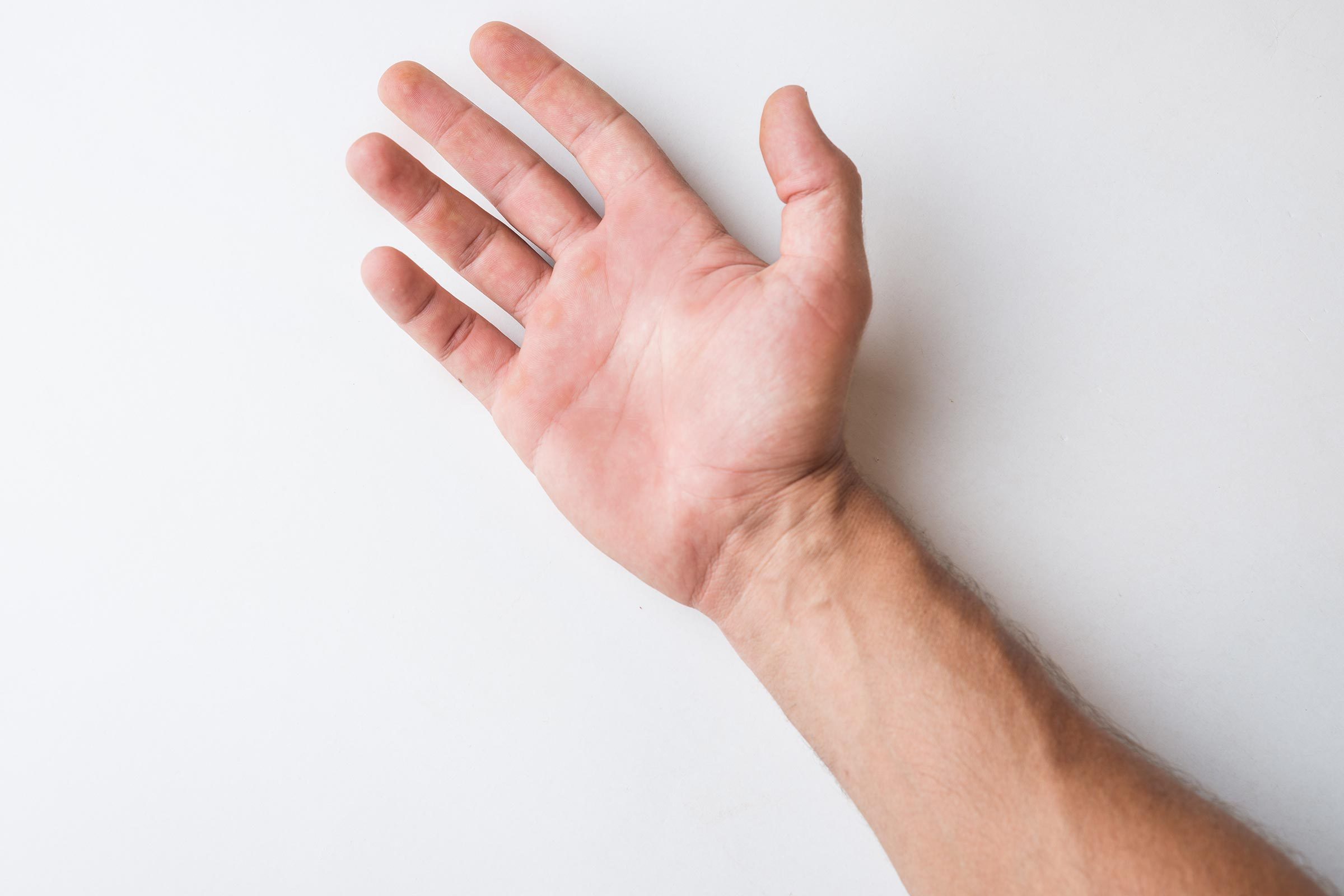
DC_Aperture/Shutterstock
There are many causes for red blotches on the palms, and some are more serious than others. These blotches might show up in people with an inflammatory condition like eczema or psoriasis, or infectious conditions such as ringworm, syphilis, or viruses, according to Dr. Lipner. Other causes include liver disease, endocrine disease, and rheumatoid arthritis. While you’re looking at your hands, check for these 10 surprising conditions your hands might predict.
Reoccurring blood spots in your eye
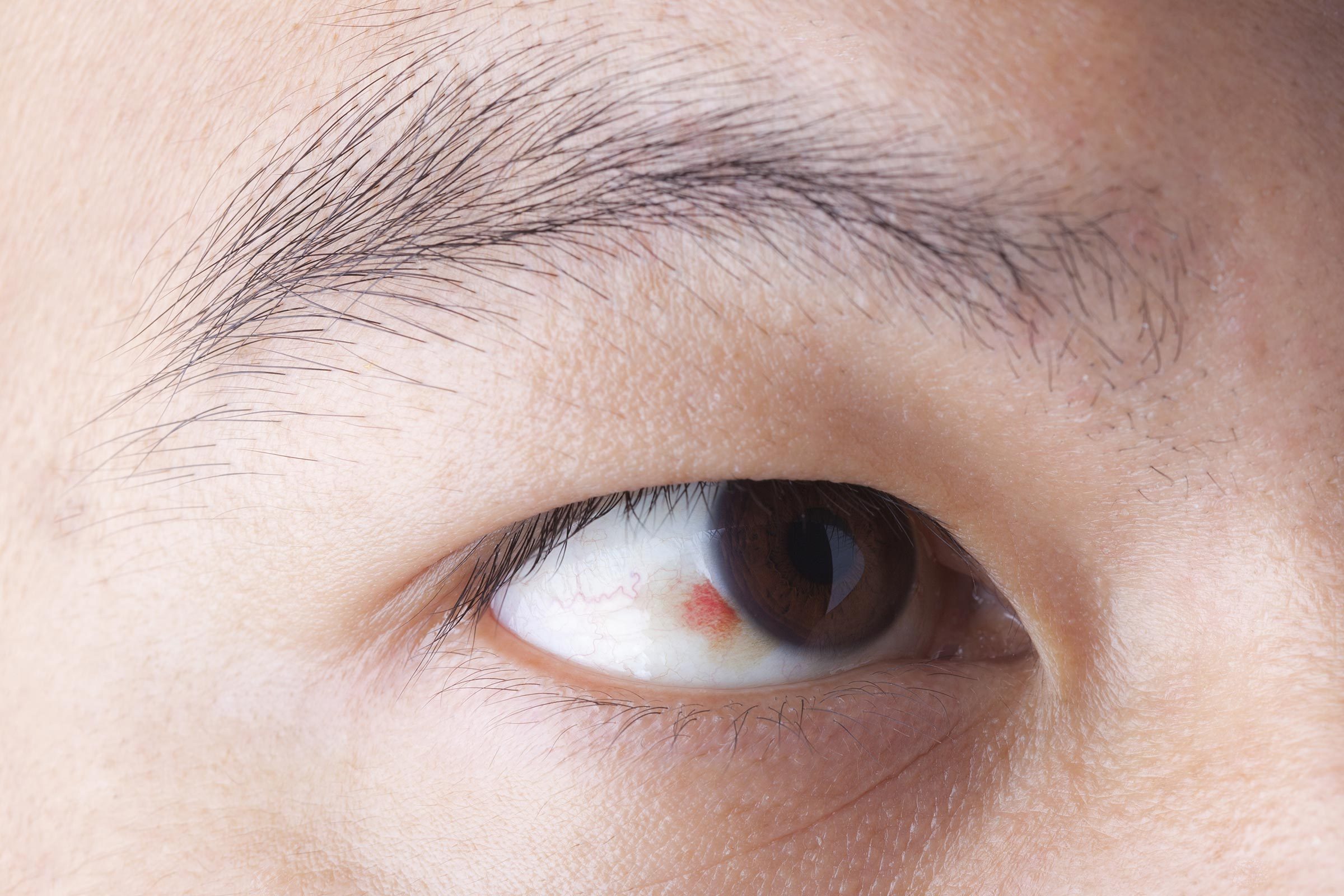
895_The_Studio/Shutterstock
Although a subconjunctival hemorrhage—a broken blood vessel in the eye—might be alarming to see, it’s usually a harmless condition that disappears within two weeks or so, per Mayo Clinic. That said, reoccurring hemorrhages are frequent in people with high blood pressure or diabetes, according to the American Heart Association.
A rash in the shape of a bullseye
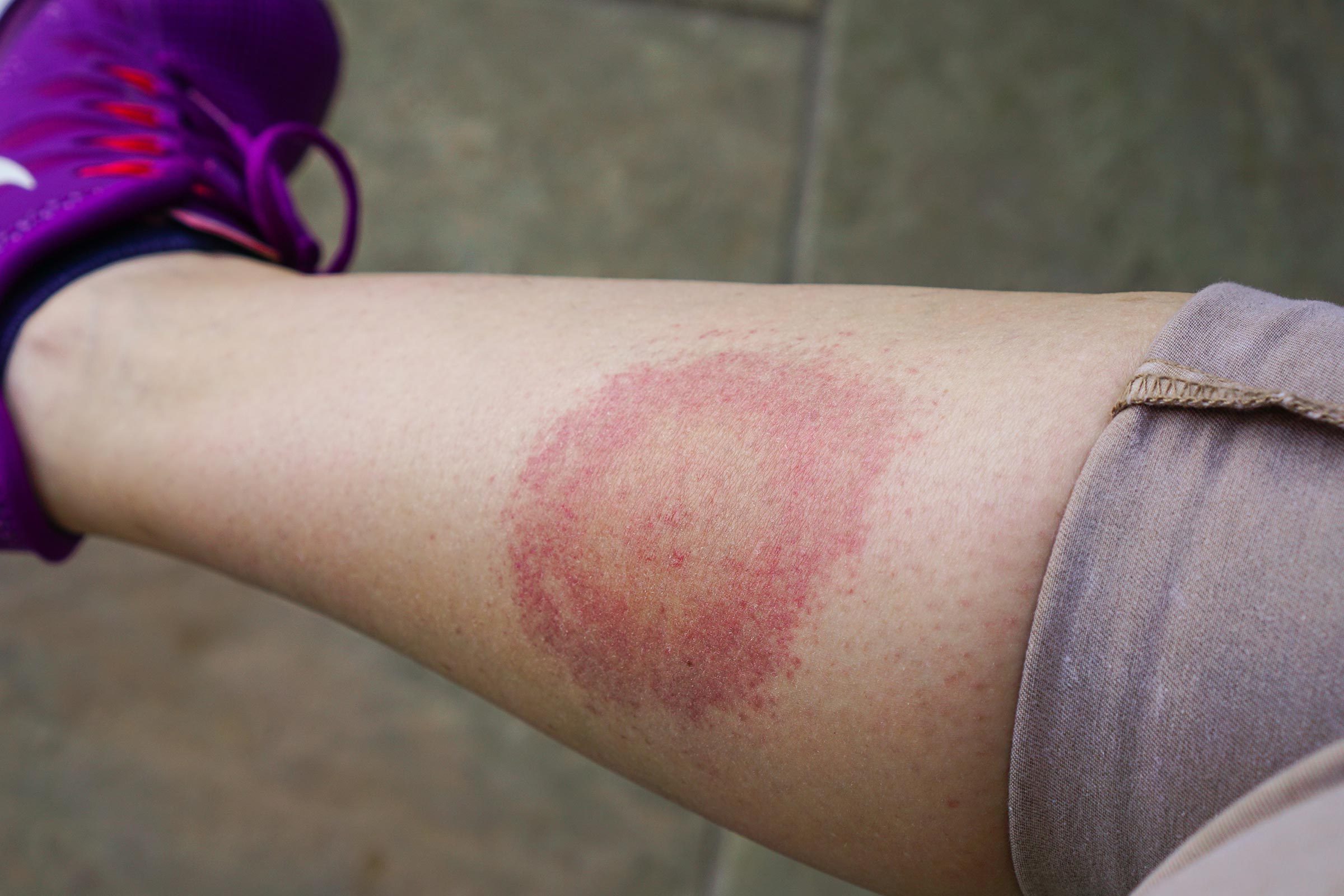
Lyme disease can cause a bullseye rash that looks like a circular area of redness with another large circle and normal-colored skin between the two areas, Dr. Lipner says. People get Lyme disease thanks to bacteria transmitted by a tick. If you have a similar mark on your body, watch out for a fever and fatigue, too. If left untreated, Lyme disease can affect the heart, brain, and joints, according to Dr. Lipner. Other rashes that may look similar are mosquito or bug bites, hives, ringworm, and more. Again, your dermatologist can do a blood test, skin biopsy, or skin scraping to find the root cause. Other symptoms might not be so starkly visible, like these 42 strange symptoms that can signal serious disease.
Learn more on Reader’s Digest


